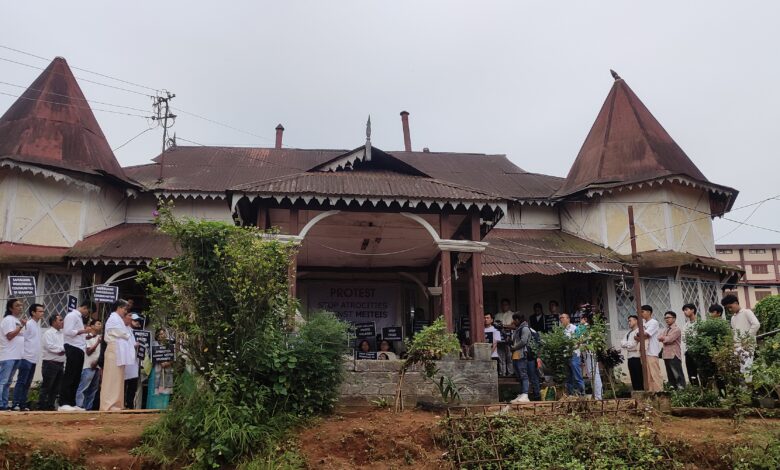Vanishing history: Shillong’s heritage structures need protection

 Does it bother any citizen of Shillong or Meghalaya that decades-old Assam-type buildings are vanishing fast? And along with this, many heritage structures are also vanishing. Two such buildings that recently became the victims of apathy are Tara Ghar and Redlands, or Manipur Rajbari.
Does it bother any citizen of Shillong or Meghalaya that decades-old Assam-type buildings are vanishing fast? And along with this, many heritage structures are also vanishing. Two such buildings that recently became the victims of apathy are Tara Ghar and Redlands, or Manipur Rajbari.
Tara Ghar is the former official residence of Meghalaya’s chief ministers. Former CMs like J.D. Rymbai and E.K. Mawlong had stayed at Tara Ghar during their tenures. There were years of legal battle to save the structure. But those fighting for the cause could not sustain it.
Tara Ghar encapsulates a story repeated across Shillong — a prominent colonial-era bungalow caught between arguments for development and demands for heritage protection.
The bungalow became the flashpoint of a PIL in 2012 when civic activists objected to the state government’s plans to replace it with a new assembly complex for Rs 113 crore.
The Shillong bench of the Gauhati High Court admitted the petition and granted an interim stay on its demolition.
State actions after those orders had been uneven. The Meghalaya Heritage Act, 2012, provides a statutory framework to declare and protect heritage buildings and precincts. The Act empowers the Meghalaya Heritage Authority, under the chairmanship of the chief secretary, to create conservation plans and control development in heritage zones. Yet, the heritage law’s promise has not yielded on-ground outcomes as numerous Assam-type and colonial buildings in Shillong continue to be lost or altered.
Recently, the chief minister inaugurated a State Guest House at the Tara ghar site — news that local activists described as a move that effectively downplays earlier PIL concerns.
According to an RTI application filed by Meghalaya Monitor, the construction of the guest house started on 14th September, 2022, at a cost of about Rs 25 crore. The project was implemented by JC Infra Corporation Ltd.
Now, let us talk about two more potentially heritage structures. One is the Manipur Rajbari, where a merger agreement was signed between Manipuri King Bodhchandra Singh and the Indian government in 1949. The heritage structure in Laitumkhrah was not only demolished, but a concrete structure has already come up. Strange as it may sound, but Chief Minister Conrad Sangma said during his recent visit to Manipur that he was not aware of the developments.
Another instance of complete apathy toward history is the case of Brookside Bungalow. Malabika Bisharad, a resident of Rilbong, recently approached the governor with an appeal to declare the bungalow a heritage site. The demand has been there for years now, and several prominent Shillongites have asked for a heritage tag, which the state government conveniently overlooked.
The damage has been done to a great extent. Now, what remains needs to be protected. And to do that, there must be an urgent and transparent application of the Meghalaya Heritage Act. The state should put buildings like Tara Ghar on a published heritage list, issue temporary protection orders while conservation plans are drafted, and require public disclosures of any alteration approvals via RTI and online registers.
Second, adaptive reuse, such as sensitive conversion to a guest-house, museum, or cultural centre, is preferable to demolition — but must follow conservation plans and independent heritage audits.
Third, an empowered, well-resourced Heritage Authority with teeth would reduce ad-hoc decisions.
If Shillong hopes to stop the steady erosion of its tangible past, the Taraghar and the Manipur Rajbari episodes must become a lesson. Laws such as the Meghalaya Heritage Act are only as effective as the institutions that implement them, and civil scrutiny needs faster, clearer answers from the government when any heritage site is proposed for change.




